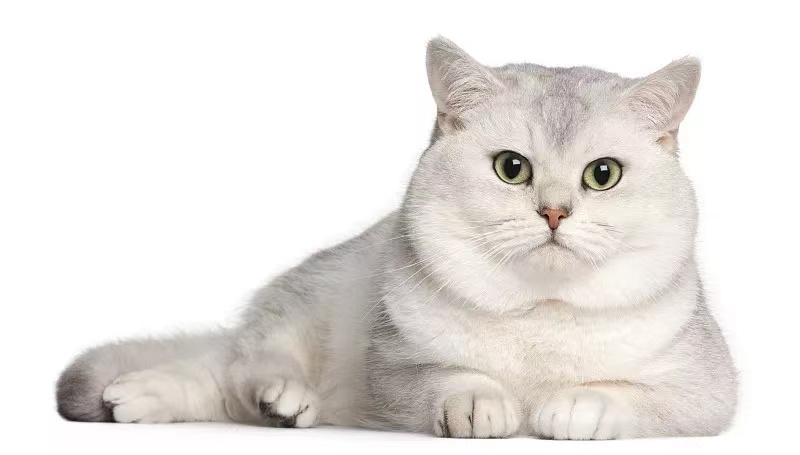

What is a cat’s lifespan? A comparison based on lifestyle and breed
Having a cat by your side is a precious experience filled with unforgettable moments. But one question often arises among owners: How long will my cat live? A cat’s lifespan can vary significantly depending on many factors, including lifestyle, diet, health, and even breed.
An indoor cat with proper care can live over 15 years, while an outdoor cat faces more dangers that may shorten its lifespan. Similarly, some breeds are known to live longer than others. For example, a Siamese or Ragdoll can reach 20 years, while other breeds, like the Persian, are more prone to health issues and have shorter lifespans.
Why is it important to know your cat’s lifespan?
Understanding the average lifespan of a cat helps you anticipate its needs and provide an optimal quality of life. By recognizing factors that influence longevity, you can:
· Adjust its diet to prevent obesity and chronic illnesses.
· Ensure regular veterinary check-ups to detect health issues early.
· Create a safe environment, especially for outdoor cats.
· Provide enough physical and mental stimulation to reduce boredom and stress.
In this article, we’ll compare the lifespans of indoor and outdoor cats, examine breed differences, and offer practical tips to extend your feline’s life. You’ll also learn how to ensure your companion enjoys a long, healthy life.
What is the average lifespan of a cat?
A cat’s lifespan varies greatly depending on its environment, health, and breed. On average, a domestic cat lives 12 to 18 years, but well-cared-for cats often exceed this range.
Average lifespan of a domestic cat
Indoor cats typically live longer, as they’re shielded from outdoor dangers and receive balanced nutrition and regular veterinary care.
· Indoor cat: Average lifespan of 15 to 20 years.
· Outdoor cat: Shorter lifespan, 5 to 12 years, due to increased risks.
· Neutered/spayed cat: Lives 2 to 4 years longer on average than unaltered cats.
Why do some cats live longer than others?
Several factors influence a cat’s longevity:
· Lifestyle: Indoor cats face fewer accidents and diseases.
· Genetics: Some breeds are hardier than others.
· Diet: Proper nutrition prevents obesity and kidney disease.
· Veterinary care: Vaccinations, check-ups, and parasite treatments extend lifespan.
· Neutering/spaying: Reduces cancer and hormone-related disease risks.
Longevity records: What’s the world’s oldest cat?
Some cats reach exceptional ages due to genetics and attentive care. The record for the oldest cat is held by Creme Puff, a cat who lived 38 years in the U.S.
While this age is rare, well-cared-for cats, especially breeds like the Siamese and Birman, often surpass 20 years.
Indoor vs. Outdoor Cats: Who Lives Longer?
A cat’s lifestyle greatly impacts its lifespan. Indoor cats thrive in controlled environments, while outdoor cats face hazards that shorten their lives.
Why do indoor cats live longer?
Indoor cats live 15–20 years on average because they’re protected from:
· Accidents: No road traffic risks.
· Diseases: Reduced exposure to viruses like FIV or feline leukemia.
· Controlled diet and healthcare: Prevents obesity and chronic illnesses.
· Lower stress: A safe environment reduces anxiety and aggression.
Why do outdoor cats have shorter lifespans?
Outdoor cats live 5–12 years on average due to risks like:
· Road accidents: A leading danger for outdoor cats.
· Fights and injuries: Infections from clashes with other animals.
· Contagious diseases: FIV (feline AIDS), leukemia, parasites.
· Predators and poisoning: Exposure to wildlife or toxic substances.
Breed-Specific Lifespans and Influencing Factors
Bengal: Very active, lifespan of 12–16 years, but prone to heart disease.
Scottish Fold: Suffers from genetic joint issues, average lifespan 10–14 years.
Devon Rex: Fragile and prone to illnesses, lifespan 9–13 years.
Why Do Some Cat Breeds Live Longer?
Long-lived breeds often share these traits:
· Less Inbreeding: Natural lineages (e.g., European Shorthair) tend to be hardier.
· Medium Size: Larger breeds (Maine Coon, Savannah) have shorter lifespans.
· Fewer Hereditary Diseases: Some breeds are prone to heart, respiratory, or kidney issues.
Breed Lifespan Comparison Table
|
Breed |
Average Lifespan |
Longevity Factors |
|
Siamese |
15–20 years |
Natural robustness, regular veterinary care. |
|
Birman |
16–20 years |
Strong genetics, low disease rates. |
|
Maine Coon |
10–15 years |
Prone to heart disease (HCM), large size. |
|
Persian |
12–15 years |
Respiratory issues due to flat faces. |
|
Scottish Fold |
10–14 years |
Genetic joint problems. |
Choosing a Cat Based on Lifespan
If you want a long-lived companion, prioritize hardy breeds. However, each breed has unique needs:
· Active breeds like Bengals require more stimulation.
· Calm breeds like Ragdolls thrive indoors.
· Independent breeds like European Shorthairs tolerate outdoor access better.
Regardless of breed, regular vet visits, a balanced diet, and a safe environment are key to maximizing lifespan.
Factors Influencing a Cat’s Longevity
Beyond breed and lifestyle, diet, healthcare, and environment play critical roles.
1. Diet and Hydration
A balanced diet is crucial for longevity:
· High-Quality Food: Premium kibble or wet food rich in animal protein.
· Avoid Overfeeding: Obesity raises risks of diabetes and heart disease.
· Hydration: Ensure adequate water intake, especially for cats on dry food. A water fountain can help.
2. Veterinary Care
Regular vet visits detect issues early and extend lifespan:
· Annual Checkups: Screen for early signs of disease.
· Vaccinations: Protect against illnesses like feline leukemia.
· Parasite Control: Regular deworming prevents infections.
3. Physical Activity and Mental Stimulation
Active cats stay healthier:
· Enriched Environment: Cat trees, scratching posts, and interactive toys.
· Daily Playtime: Even senior cats need stimulation.
· Safe Outdoor Access: A secured garden or balcony enriches their life.
4. Spaying/Neutering
Spayed/neutered cats live 2–4 years longer due to:
· Fewer Escapes: Reduced roaming and exposure to outdoor risks.
· Less Aggression: Lower risk of injuries from fights.
· Disease Prevention: Avoids hormonal cancers and infections.
5. Stress-Free Environment
A calm, safe space promotes well-being:
· Reduce Stress: Stress weakens immunity and increases aggression.
· Safe Rest Areas: Provide hiding spots and quiet sleeping zones.
· Minimize Changes: Sudden changes (e.g., moving, new pets) cause anxiety.
6. Genetics and Health Predispositions
Hereditary diseases impact lifespan:
· Heart Disease: Maine Coons are prone to hypertrophic cardiomyopathy (HCM).
· Respiratory Issues: Brachycephalic breeds (e.g., Persians) struggle with breathing.
· Kidney Failure: Common in older cats, especially certain breeds.
Key Takeaway: While genetics matter, proactive care—proper nutrition, vet visits, and a safe environment—can significantly extend your cat’s life, regardless of breed.
Conclusion: Ensuring a Long and Peaceful Life for Your Cat
By implementing these best practices, you can provide your cat with a healthy, balanced life. Key steps include:
· Providing a tailored diet and avoiding obesity.
· Maintaining a stable routine to reduce stress.
· Scheduling regular medical checkups to prevent illnesses.
Every small effort contributes to ensuring a long, happy life for your feline companion!
Full Translation of the Provided Text
An overweight cat is at higher risk of chronic diseases. Ensure:
· Portion control: Adjust food amounts based on age and activity level.
· Encourage exercise: Use toys, cat trees, and daily playtime.
· Avoid snacking: Spread meals to prevent overeating.
A cat-friendly environment reduces stress and accidents.
· Comfortable resting areas: Provide cozy beds and quiet spaces.
· Secure outdoor access: Use balcony nets or fenced gardens.
· Avoid household hazards: Remove toxic plants, electrical cords, and small ingestible objects.
Stress directly impacts health, potentially causing digestive or urinary issues.
· Avoid abrupt changes: Introduce moves or new routines gradually.
· Stick to a stable routine: Regular feeding, playtime, and affection reassure your cat.
· Use calming pheromones: Diffusers or sprays help anxious cats.
Spaying/neutering offers key health benefits:
· Fewer escapes: Reduces accidents and fights.
· Hormonal disease prevention: Lowers risks of mammary cancer and uterine infections.
· Less urine marking: Neutered cats are less likely to spray.
A well-socialized cat is a happier cat.
· Harmonize multi-Cat Households: Ensure peaceful coexistence.
· Daily playtime: Mental and physical stimulation reduces stress.
· Respect boundaries: Some cats prefer observing over constant interaction.
Lifespan-Boosting Practices Comparison
|
Practice |
Benefits |
Tips |
|
Quality Diet |
Prevents obesity and kidney disease |
Prioritize animal protein and avoid excess carbs. |
|
Veterinary Care |
Early disease detection |
Schedule annual checkups and parasite treatments. |
|
Physical Activity |
Maintains healthy weight and reduces stress |
Use toys and environmental enrichment. |
|
Safe Environment |
Reduces accident risks |
Secure windows and remove dangerous objects. |
|
Spaying/Neutering |
Minimizes risky behaviors |
Perform at 6 months to prevent roaming and hormonal diseases. |
Final Note: With love, care, and attention to these guidelines, your cat can thrive as a cherished companion for many years. ��
A Cat Can Be a Loyal Companion for Many Years
A cat can be a loyal companion for many years, provided it is given a suitable environment and regular care. A cat’s lifespan depends on several factors, including its lifestyle, diet, veterinary care, and genetics.
· Lifestyle: Indoor cats generally live longer than outdoor cats, but a compromise is possible with a secure outdoor space.
· Balanced Diet: Prioritize protein-rich food and ensure proper hydration to prevent kidney disease.
· Regular Veterinary Care: Annual checkups help prevent and treat illnesses early.
· Stimulation and Exercise: Toys, cat trees, and daily interactions improve well-being and reduce obesity.
· Stress Reduction: A calm, stable environment promotes serenity and extends your cat’s life.
Every cat has its own preferences and needs. Some love exploring outdoors, while others prefer staying indoors. The key is to observe their behavior and adapt to their requirements to ensure a happy life.
Whether your cat is a purebred or a domestic shorthair, playful or calm, the most important thing is to provide a safe living environment and daily attention.
Do you have a long-lived cat? Tips for improving feline quality of life? Share your experience in the comments and connect with fellow cat lovers!
For more advice on cat health and well-being, explore our other articles.
00001.
Which cat breed lives the longest?
The longest-lived breeds are Siamese, Ragdoll, and Birman, which can reach 20+ years with proper care.
00002.
00003.
Can an outdoor cat live as long as an indoor cat?
Indoor cats average 15–20 years, while outdoor cats live 5–12 years due to accidents and disease risks.
00004.
00005.
What are signs of aging in cats?
Reduced energy, dental issues, duller coats, and joint problems like arthritis.
00006.
00007.
How can I improve my senior cat’s quality of life?
Provide age-appropriate food, hydration, a comfortable resting area, and regular vet visits.
00008.
00009.
Do spayed/neutered cats live longer?
Yes! Spayed/neutered cats live 2–4 years longer due to reduced hormonal diseases and roaming risks.
00010.
00011.
What diet prolongs a cat’s life?
High-protein, low-carb food. Wet food (pâté) boosts hydration and reduces kidney disease risks.
00012.
00013.
When is a cat considered senior?
Cats are seniors at 7–8 years old, though some breeds stay active until 12 years.
00014.
00015.
How to extend the life of a sick cat?
Regular vet care, specialized diets, and tailored treatments (e.g., for diabetes or kidney disease).
00016.
00017.
Do black cats live longer?
No scientific proof links coat color to lifespan, but black cats often come from robust lineages.
00018.
00019.
What’s the world’s oldest cat?
The oldest recorded cat, Creme Puff, lived 38 years thanks to a balanced diet and healthy lifestyle.
00020.
Let us know if you need further details! ��
Name: Leo Lau
Mobile:+8618100510913
Tel:+86-551-65111585
Whatsapp:+8618100510913
Email:[email protected]
Add:No.1288, Ziyun Road, Economic and Technological Development Zone, Hefei, Anhui Province, China
We chat
